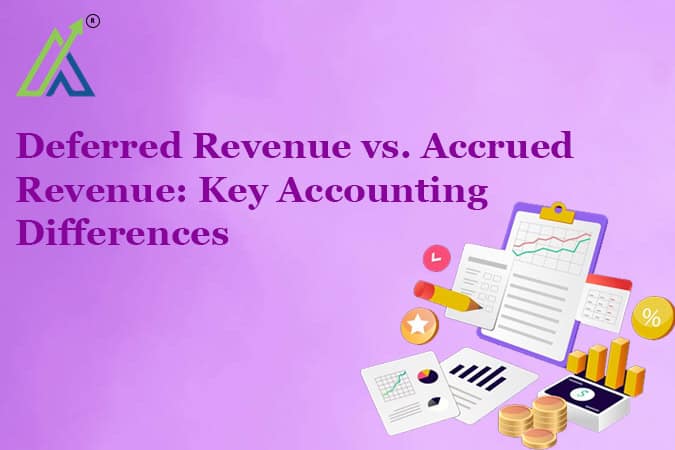In the accounting process, ledger posting—the process of moving entries entered into a journal to individual ledger accounts—is absolutely vital. Officially recording financial transactions, a ledger groups them into certain accounts including assets, obligations, income, and spending. This system guarantees correct financial reporting by helping to track and arrange all financial interactions. Important information like the transaction date, the amount, and the pertinent account names is found in every ledger entry. Organization of transactions in this manner guarantees effective accounting, mistake detection, and the generation of trial balances for financial reporting by use of ledger posting.
What is Ledger Posting?
Ledge is a term that means ‘shelf’. The term ‘ledger’ is derived from the word ‘ledge.’. A ledger is the official record of significant transactions that occur.
An individual asset, person, revenue, or expense is represented by each ledger. Entering all the transactions from the journal to the ledger is known as ledger posting. Examples include all transactions involving banks, cash, buildings, land, salaries, and inventory.
Sorting individual transactions into distinct personal accounts is a key function of a ledger. Transactions of comparable topic matter and character into personal groupings are made simple by ledgers. Accounting may be completed efficiently and successfully with the help of the ledger posting system.
Important Characteristics of Ledger
A ledger account has a few salient features among others:
- A ledger comprises all the accounts—that of sales, purchases, purchases, and so on. Thus, one may consider a ledger as a register or a book including all the accounts. Accounts are opened in the ledger at the beginning of a company or during a year.
- The first notable feature of the ledger is the sequence of monetary exchange. Ledger accounts mostly aim to classify all the exchanges into the accounts. Every trade is classified in the several ledger accounts found in a ledger.
- One of the key traits of a ledger is data optimizing. Mistakes are corrected via mix-up tracking. In a perfect world, for instance, if a purchase is inflated at that moment, the bookstore must follow the slip-up and inspect all the purchasing records.
- One major feature of ledger accounting is the ability to hold relevant data in one location.
- The general ledger, which includes all of the accounts for budgetary items, is used by small associations. The large association, on the other hand, uses the subsidiary ledger as a memoranda ledger, which includes the accounts of the clients and creditors. Similarly, the total accounts for each of these items make up the general ledger. These are a few of a ledger’s attributes.
- The trial balance is subtracted from the general ledger preparation closing balance. In this sense, the ledger is crucial to the preparation of fiscal reports. Trial balance extraction is the initial step in both ledger and journal entry for budget report layouts.
Columns in a Ledger
From the books of initial entities or journals, transactions show up into the ledger account. Every transaction always moves from a journal to a ledger. There exist the following columns in a ledger:
- Particulars: Specifically, the name of the correct account holder is shown. Every transaction is likewise displayed or mirrored here.
- Date: The date when the transaction took place is depicted in this date column.
- Amount: The amount associated with each entry is shown in this column.
- Journal Folio (JF): This column is used to denote the page numbers once the journal entry has passed
Step-by-Step Guide to Ledger Posting
Step 1: Record Transactions in the Journal
Start here. The Journal is where every transaction lives first—raw and unfiltered. Use the double-entry system: every transaction hit two accounts (one debit, one credit).
Example:
On 15th March, TechGadgets buys office chairs for ₹20,000 cash.
- Debit: Furniture Account ₹20,000 (asset increases).
- Credit: Cash Account ₹20,000 (cash decreases).
Journal Entry:
Date | Particulars | Debit (₹) | Credit (₹) | JF |
2024-03-15 | Furniture A/c Dr. | 20,000 | – | 45 |
| To Cash A/c | – | 20,000 | 45 |
Note the Journal Folio (JF) column—it tracks the journal page number (e.g., page 45).
Step 2: Post to the Ledger – Column by Column
Transfer journal entries to the Ledger using these columns:
Date Column
- What: The exact date of the transaction.
- How: Copy it directly from the journal.
- Example: 2024-03-15 from the journal entry above.
Particulars Column
- What: The name of the other account involved in the transaction.
- How:
- In the Furniture Account Ledger: Write “To Cash A/c” (you received furniture by paying cash).
- In the Cash Account Ledger: Write “By Furniture A/c” (cash was spent on furniture).
Amount Column
- What: The transaction value. Specify Debit (Dr) or Credit (Cr).
- How:
- Furniture Account (Debit): ₹20,000.
- Cash Account (Credit): ₹20,000.
Journal Folio (JF) Column
- What: The journal page number where the original entry lives.
- How: Write “45” in both ledger accounts (as in the journal example).
Ledger in Action: See the Columns Work
Furniture Account Ledger:
Date | Particulars | Amount (₹) | JF |
2024-03-15 | To Cash A/c | 20,000 (Dr) | 45 |
Cash Account Ledger:
Date | Particulars | Amount (₹) | JF |
2024-03-15 | By Furniture A/c | 20,000 (Dr) | 45 |
At month-end, tally totals:
- Debit Side Total (Furniture A/c): ₹20,000.
- Credit Side Total (Cash A/c): ₹20,000.
Check: Debits = Credits. If not, hunt for errors.
Step 4: Prep a Trial Balance
List all ledger balances to verify accuracy.
Account | Debit (₹) | Credit (₹) |
Furniture | 20,000 | – |
Cash | – | 20,000 |
Total | 20,000 | 20,000 |
Questions to understand your ability
Q1.) What is the primary purpose of ledger posting in accounting?
A) To record raw transactions
B) To transfer journal entries to individual accounts
C) To create the general ledger
D) To calculate net profit
Q2. Which of the following is a feature of a ledger account?
A) It stores only credit transactions
B) It does not track errors
C) It contains both debit and credit entries
D) It only includes sales accounts
Q3.) What is the purpose of the Journal Folio (JF) column in a ledger?
A) To show the balance of an account
B) To indicate the date of the transaction
C) To track the journal page number where the entry is recorded
D) To categorize the type of transaction
Q4.) Which of the following is true regarding the balancing of ledger accounts?
A) Debit entries are never balanced against credit entries
B) At the end of the month, the debit and credit sides should be equal
C) Only the credit side is balanced
D) Ledger accounts are balanced once at the end of the fiscal year
Q5.) What is the significance of the trial balance in ledger posting?
A) It helps in finalizing the company’s profits
B) It lists all ledger balances to verify accuracy
C) It is used to prepare the general ledger
D) It provides information about future transactions
Conclusion
In conclusion, ledger posting is an essential step in accounting that ensures proper categorization and recording of transactions. By transferring journal entries to the ledger, businesses can organize their financial activities effectively. This process involves posting transactions in various columns, balancing accounts, and preparing trial balances. Proper ledger management supports accurate financial reporting, error detection, and provides a clear overview of a company’s financial standing, ultimately aiding in efficient accounting practices.
FAQ's
From the journal to individual ledger accounts, ledger posting is the process of moving transactions whereby each account denotes a particular asset, cost, or income.
A ledger helps in organizing transactions by category (e.g., sales, purchases, expenses), making accounting efficient and aiding in the preparation of financial statements.
The key columns in a ledger include:
- Particulars: Account name involved.
- Date: Transaction date.
- Amount: Value of the transaction.
- Journal Folio (JF): Journal page reference.
After recording a transaction in the journal, transfer it to the ledger by entering the date, amount, account names, and journal folio reference.
The Journal Folio (JF) column tracks the page number in the journal where the original entry is recorded, helping to maintain proper reference.
If debits and credits don’t match, check the transactions for errors and correct them to ensure accuracy.
A trial balance is prepared by listing all ledger balances to verify that total debits equal total credits.
A general ledger contains all accounts, while a subsidiary ledger includes specific accounts like clients and creditors, providing detailed records for particular areas.





